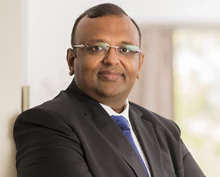
With talks on sustainability, gaining grounds in agriculture it makes sense to investigate whether silk could be produced sustainably. Agriculture World Editor Dr Lakshmi Unnithan had a very engaging talk with Kusuma Rajaih, a Technocraft in Handloom Technology, who has spend over 40 years of practical experience in this industry and has become a cause to embrace the silkworm species. He is also an Inventor, Entrepreneur follower of the principle of Ahimsa and Mahatma Gandhi.
Early Life and Education
Kusuma Rajaih although from an Agriculture family, is a weaver by caste and was born and brought up in a densely forested village in Andrapradesh. He remembers his early education from his village where there were no facilities and lack of teachers. He went on to complete his formal education and also went on for studying a diploma course in the Indian Institute of Handloom Technology and also bagged a job in Hyderabad with the Handloom Department, AAPCO.
When Kusuma Rajiah was working in The AAPCO, in the early 90s, he was approached by Janaki Venkataraman, wife of former President R. Venkatraman for a non-violent silk. Kusuma procured some cocoons and started doing experiments on to how to produce silk without deliberate killing of the worms and he was successful in that. In 1992 he made two saree samples and even then he couldn’t produce it in bulk. In 2000 he once again researched for an year for towards bulk and commercial production of Ahmisa Silk and succeeded. He remembers procuring cocoons and then making yarns, with no organization coming forward for weaving and having to spend money from his pocket itself. Atlast some spinning mills came forward after much discussion and weaved sarees, angavastra and dhotis. He remembers how he got 25 sarees made and on started the journey says Kusuma Rajaih
The Ahimsa Way
The silk from the cocoons of the silk worm (Bombyx mori) is believed to be the finest at the stage when they are ten days old and are dropped into boiling water says Kusuma. This is preferred because when the cocoons open naturally at one end, to release the moth, the continuity of the fibre is lost. But maybe not, thought Kusuma. He was in conversation with the Editor,Dr Lakshmi Unnithan.
Kusumah purchases cocoons from mulberry farms in Chittoor district. The yellow coloured cocoons are reared in large cane baskets at his residence in Hyderabad. The moths emerge after 8-10 days, piercing the cocoon at one end. “The adult moths have a short life span of four days. During this time they mate and die naturally,” Kusuma explains. The pierced cocoons are spun into yarn. This is then woven into fabrics. Weavers of Nalgonda and Ananthpur district of Andhra Pradesh produce dhotis while fabrics, including saris, are woven by the weavers of Karimnagar district. “All his products are done on handlooms and benefits several weaver families,” says Kusuma.
Inspired by Mahatma Gandhi, he calls this silk Ahimsa. While Ahimsa silk may lack the shine of regular silk, it is comfortable to wear. It’s also wrinkle-free and has a better fall. Kusumah mentions of awareness created of Non violence Ahimsa to the World through Fabric The making of Ahimsasilk is helping weavers for Higher wages and continuous employment. He also mentions of Ethical/Ethical/Sustainable Fashion Designers Like Ivana Basilotta, Clare Callan (UK), Brit Watcher (Germany), Anna Brbara Aumuller (Astria/France), Margherita de Cless (Italy), Mandali Mandrella, Joy Luts (Belgiaum), Christina Abbott (Canada), Pam Kille Kaplan, Les & Brian, Sophia, Maria Vitiale (USA), Jana Ruzickova (Czech Republic), Nelun Harassgama (Sri Lanka) and many more who are interested in Ahimsa Silk.He also supplies silk to Companies Like Aurora Silk, Cocoon Biotech Inc. (USA), Ethical Solk Company (Ireland), Bio-Seidentraum (Germany) Etc.

Ahimsasilk as on today, through my continuous efforts, is most popularized in the world and a lot of awareness and demand has happened and He alone is not able to fulfill the requirements of. It is required to be taken up at larger level, might be at the level of Institution or corporate. He also mentions sharing the Government of India granted Patent under Intellectual Property Rights for the Ahimsa silk in the name of “Eco-friendly Method of Manufacturing Mulberry silk (Bombyx Mori) Yarn” in the year 2006 and also Trade Marks to Government of Telangana through Proposed Corporation/as Decided by the authorities. So, that it this Intellectual Property Right remains in the safer hands of Government of Telangana.
If this is undertaken by the Government of Telengana it would be a first of Its kind in the world, Sericulture will increase four fold, thus thousands of farmers will be benefited. Possibility of getting best price for the cocoons no hassle in sale and no broker/middle men.
More weavers will get employment and get better wages by weaving Ahimsasilk products and thus improving Handloom & Textiles export, thus earning foreign exchange to the Nation as well to the State of Telengana.











